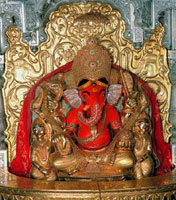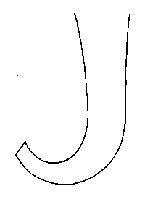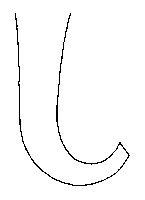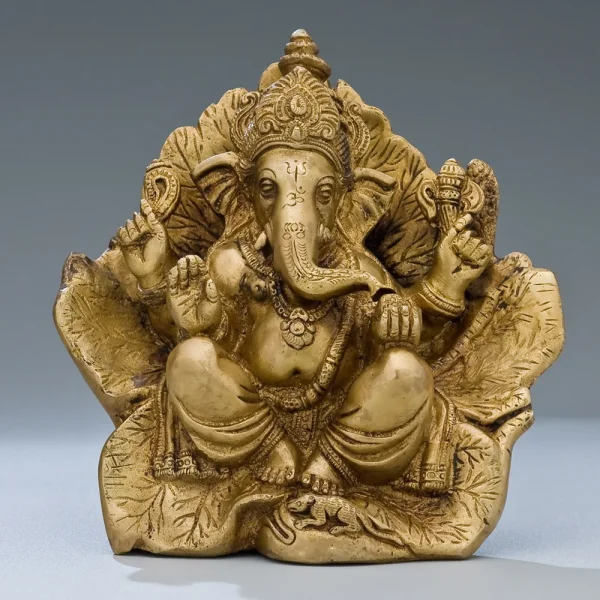P.J.
0
Why is Ganapati with the right Sided trunk not commonly worshipped?
1. Entire idol: Omkar, the unmanifest (nirgun) principle
2. Trunk: It is a popular belief that an idol with the tip of the trunk pointing towards the right and left are called right-sided and left-sided idols respectively; however this is not the case. One should not decide whether the idol is right-sided or left-sided depending upon which side the trunk is directed. It should be decided depending on the direction in which the initial curve of the trunk points. If the initial curve of the trunk in a Ganesh idol points towards the right and the tip of the trunk points towards the left yet the idol should be considered a rightsided idol. The reason for this is that, the initial curve of the trunk pointing towards the right indicates that the right (that is Sun) channel (nadi) of Ganapati is active.


2.1 Right-sided trunk: An idol of Ganapati with the trunk curved towards the right is called dakshinmurti or dakshinabhimukhi murti (the idol facing the south). Dakshin means the southern direction or the right side. The southern direction leads to the region of Lord Yama (Yamalok), the deity of death while the right side belongs to the Surya nadi (Sun channel). One who is able to face the direction of the region of Yama is powerful. So also, one with an activated Surya nadi is also radiant. Thus in both senses, the Ganapati idol with the trunk curved towards the right is said to be ‘active (jagrut)’.
One feels repulsed by the south direction because it is in that direction that scrutiny of one’s sins and merits is carried out after death, in the region of Lord Yama. Scrutiny akin to that done in the south after death, begins when alive if one faces the south or sleeps with the legs directed towards the south. The dakshinabhimukhi idol is not worshipped ritualistically in the usual manner because tiryak (raja) frequencies are emitted from the south. The ritualistic worship of this idol is performed by observing all the norms of ritualistic worship meticulously.
Consequently the sattva component is augmented and one is not distressed by the raja frequencies coming from the south.
2.2 Left-sided trunk: An idol of Ganapati with the trunk curved towards the left is called Vamamukhi. Vam means the northern direction or the left side. The Chandra nadi (Moon channel) is situated to the left. It bestows tranquility. Besides, since the northern direction is spiritually favourable and bestows Bliss (Anand), mostly the Vamamukhi Ganapati is worshipped. It is worshipped ritualistically in the usual manner.

Please also read from here
Ganesha: Lord of Success
Why is Ganapati with the right Sided trunk not commonly worshipped? - Hindu Janajagruti Samiti
1. Entire idol: Omkar, the unmanifest (nirgun) principle
2. Trunk: It is a popular belief that an idol with the tip of the trunk pointing towards the right and left are called right-sided and left-sided idols respectively; however this is not the case. One should not decide whether the idol is right-sided or left-sided depending upon which side the trunk is directed. It should be decided depending on the direction in which the initial curve of the trunk points. If the initial curve of the trunk in a Ganesh idol points towards the right and the tip of the trunk points towards the left yet the idol should be considered a rightsided idol. The reason for this is that, the initial curve of the trunk pointing towards the right indicates that the right (that is Sun) channel (nadi) of Ganapati is active.


2.1 Right-sided trunk: An idol of Ganapati with the trunk curved towards the right is called dakshinmurti or dakshinabhimukhi murti (the idol facing the south). Dakshin means the southern direction or the right side. The southern direction leads to the region of Lord Yama (Yamalok), the deity of death while the right side belongs to the Surya nadi (Sun channel). One who is able to face the direction of the region of Yama is powerful. So also, one with an activated Surya nadi is also radiant. Thus in both senses, the Ganapati idol with the trunk curved towards the right is said to be ‘active (jagrut)’.
One feels repulsed by the south direction because it is in that direction that scrutiny of one’s sins and merits is carried out after death, in the region of Lord Yama. Scrutiny akin to that done in the south after death, begins when alive if one faces the south or sleeps with the legs directed towards the south. The dakshinabhimukhi idol is not worshipped ritualistically in the usual manner because tiryak (raja) frequencies are emitted from the south. The ritualistic worship of this idol is performed by observing all the norms of ritualistic worship meticulously.
Consequently the sattva component is augmented and one is not distressed by the raja frequencies coming from the south.
2.2 Left-sided trunk: An idol of Ganapati with the trunk curved towards the left is called Vamamukhi. Vam means the northern direction or the left side. The Chandra nadi (Moon channel) is situated to the left. It bestows tranquility. Besides, since the northern direction is spiritually favourable and bestows Bliss (Anand), mostly the Vamamukhi Ganapati is worshipped. It is worshipped ritualistically in the usual manner.

Please also read from here
Ganesha: Lord of Success
Why is Ganapati with the right Sided trunk not commonly worshipped? - Hindu Janajagruti Samiti


